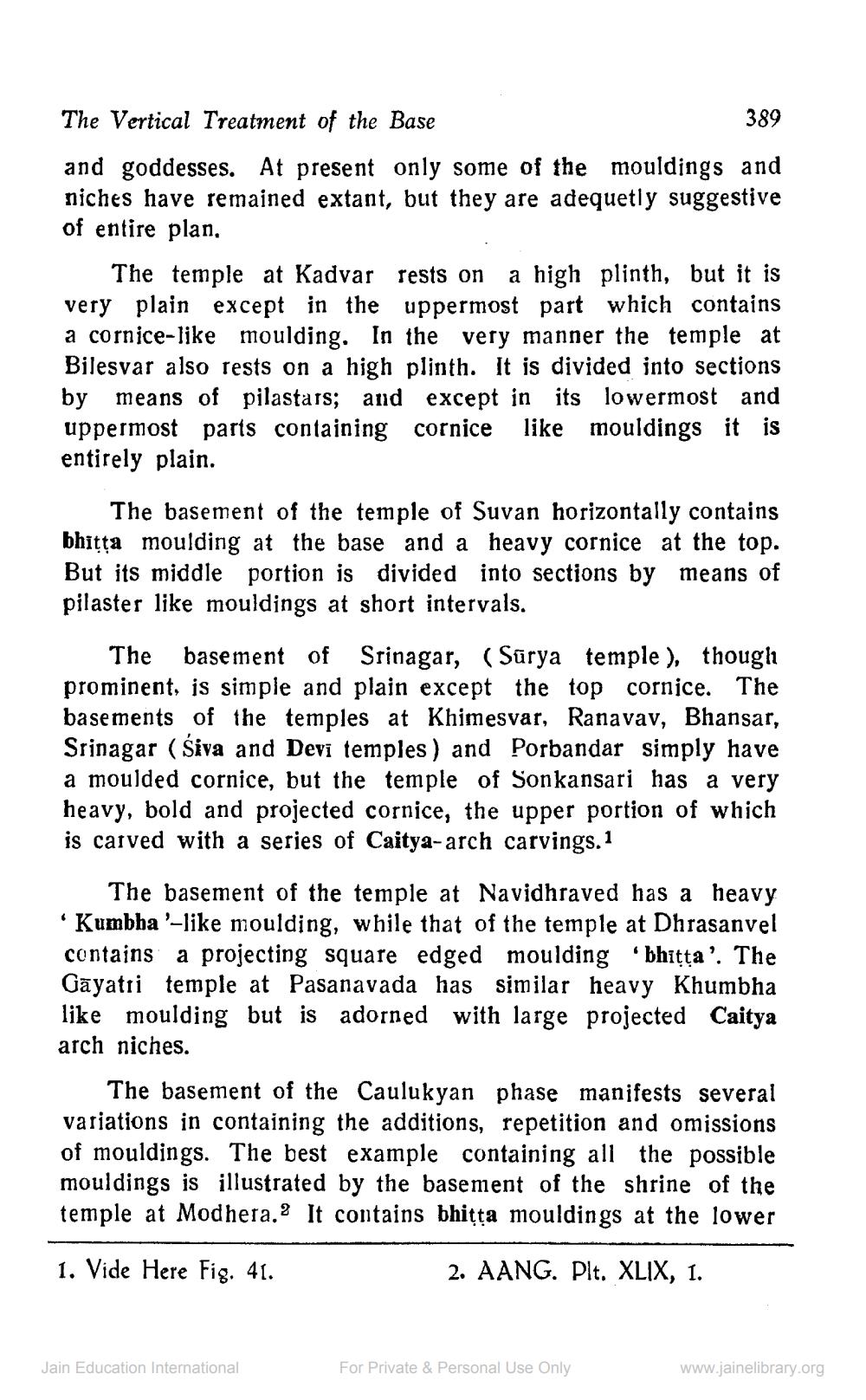________________
The Vertical Treatment of the Base
389
and goddesses. At present only some of the mouldings and niches have remained extant, but they are adequetly suggestive of entire plan.
The temple at Kadvar rests on a high plinth, but it is very plain except in the uppermost part which contains a cornice-like moulding. In the very manner the temple at Bilesvar also rests on a high plinth. It is divided into sections by means of pilastars; and except in its lowermost and uppermost parts containing cornice like mouldings it is entirely plain.
The basement of the temple of Suvan horizontally contains bhitta moulding at the base and a heavy cornice at the top. But its middle portion is divided into sections by means of pilaster like mouldings at short intervals.
The basement of Srinagar, (Surya temple), though prominent, is simple and plain except the top cornice. The basements of the temples at Khimesvar, Ranavav, Bhansar, Srinagar (Śiva and Devi temples) and Porbandar simply have a moulded cornice, but the temple of Sonkansari has a very heavy, bold and projected cornice, the upper portion of which is carved with a series of Caitya-arch carvings.1
"
The basement of the temple at Navidhraved has a heavy 'Kumbha '-like moulding, while that of the temple at Dhrasanvel contains a projecting square edged moulding bhitta'. The Gayatri temple at Pasanavada has similar heavy Khumbha like moulding but is adorned with large projected Caitya arch niches.
The basement of the Caulukyan phase manifests several variations in containing the additions, repetition and omissions of mouldings. The best example containing all the possible mouldings is illustrated by the basement of the shrine of the temple at Modhera. It contains bhitta mouldings at the lower
1. Vide Here Fig. 41.
2. AANG. Plt. XLIX, 1.
Jain Education International
For Private & Personal Use Only
www.jainelibrary.org




